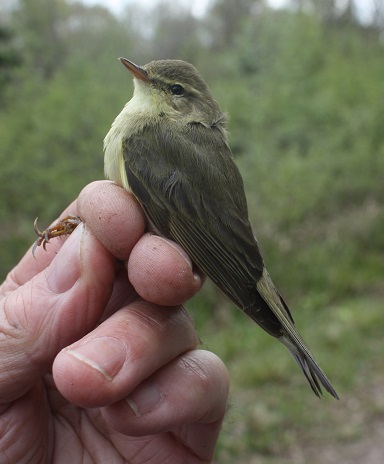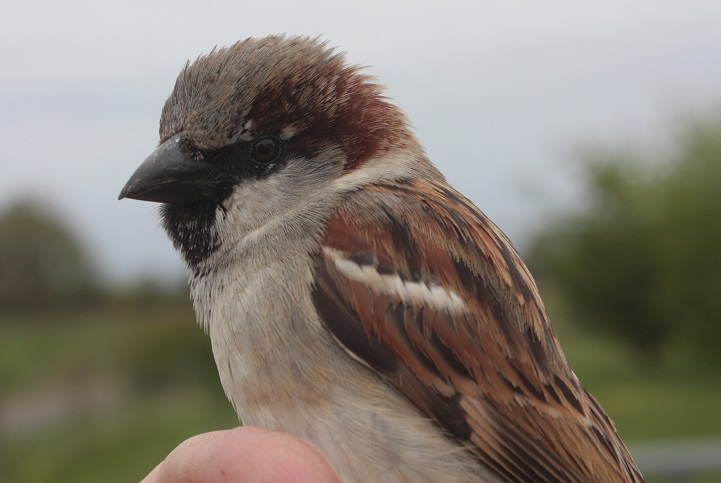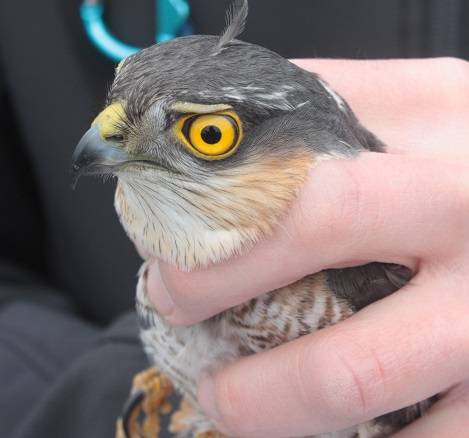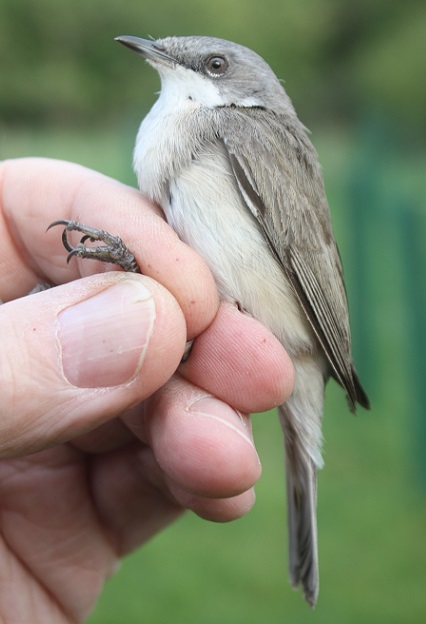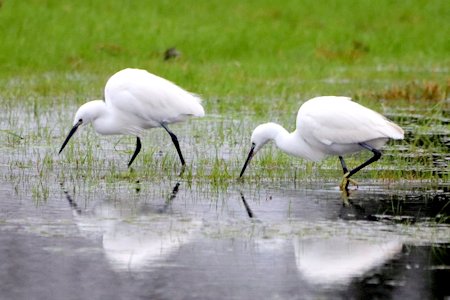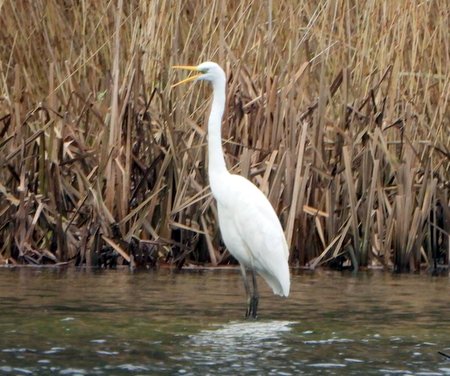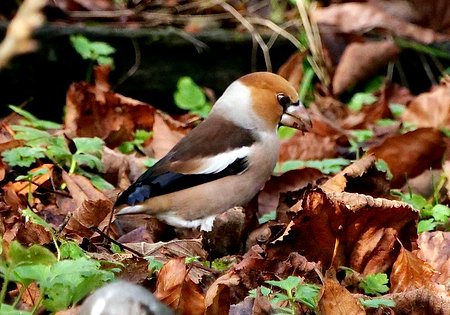Lower Moor Farm: Saturday, 13th May 2017; CES2
Following on from the rather disappointing results in CES1 we were hoping for a better return in CES2. I was joined for the session by Jonny and David. The weather was dull and overcast, usually excellent conditions for ringing but, unfortunately, the breeze got up about 9:00 and affected the later catch. We ended up with one more bird than in the equivalent session last year and the quality of the catch was excellent. The CES requires that we put our nets in the same positions year-on-year, but we are allowed to put up some additional nets to extend the catching area. Their catch just isn't recorded in the CES results. We set up two extra net rides and were delighted that they all caught. The net positions are shown in the photograph below. Those in yellow are the CES rides, white are the extra rides.
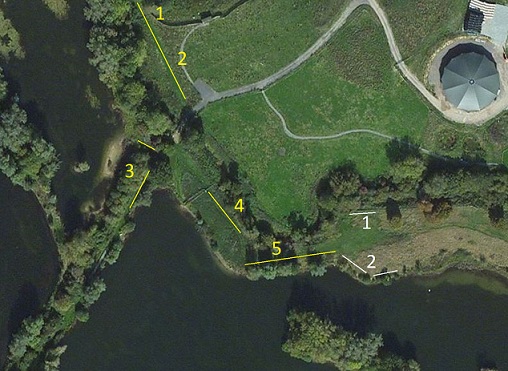
CES ride 3 is our Greenfinch ride: if we catch them, this is where they are usually caught. Today we caught three, all there. There was also a female Bullfinch, which we could not ring, because it was suffering with the Fringilla Papilloma Virus. It is over two years since I last saw this in a Bullfinch. Given that we are catching good numbers of them that are clean in all of our sites, this was a disappointment. Extra ride 2 was empty throughout the session, apart from one retrapped Robin, and then, as we were shutting the nets at the end, prior to take down, I came across two of these beauties in that net ride, within three feet of each other:
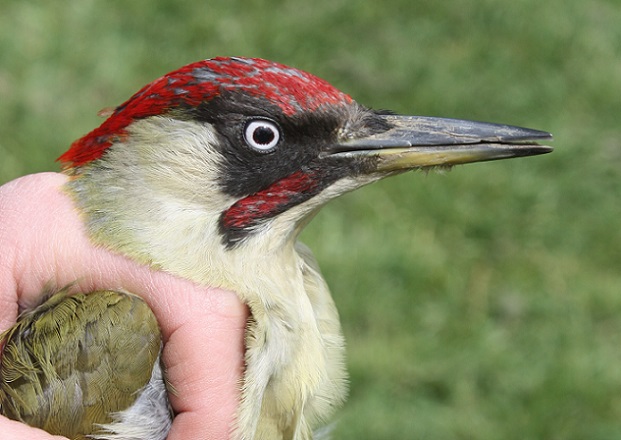
To catch one is uncommon, to catch two in one session is remarkable. If it had been a pair that close together in the net it would have been more understandable at this time of year, but they were two adult males. Along with these, we were delighted to catch our first two juvenile Robins of the year and this adult Cetti's Warbler:
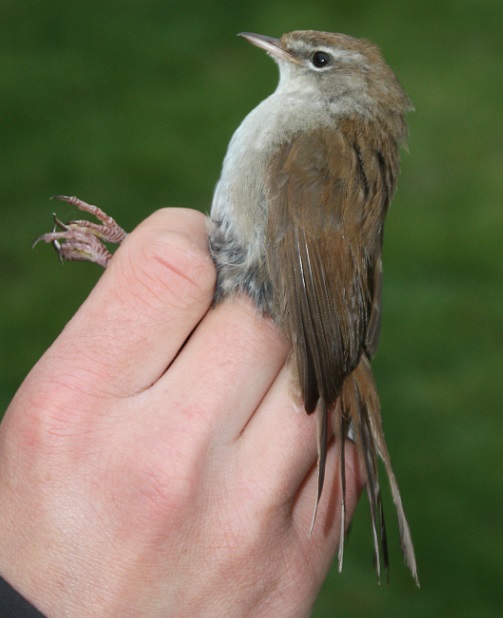
After a cracking year for them in 2015, the first time they had been caught and ringed at Lower Moor Farm, when we ringed two adults and four youngsters, 2016 was a severe disappointment, with just one adult and one juvenile ringed in the year. This bird, an adult male, was caught in a different ride (2, as opposed to 3) from the birds of 2015 and 2016. Hopefully we will see a return to 2015 levels this year.
The list from today was: Green Woodpecker 1(1); Treecreeper 1; Blue Tit (4); Great Tit (3); Dunnock (4); Robin 2(1); Blackbird 2(3); Cetti's Warbler 1; Blackcap 1(4); Garden Warbler 1(1); Lesser Whitethroat 2(1); Chiffchaff 1(1); Willow Warbler 1(4); Goldcrest (1); Greenfinch 3; Bullfinch (2); Reed Bunting 2. Totals: 18 birds ringed from 12 species and 30 birds retrapped from 13 species, making 48 birds processed from 17 species. ST/JC/DW

 ) and we are catching birds that were ringed in those earlier days. EXR389 is a Willow Warbler that was ringed as an adult of indeterminate age at Somerford Common on the 5th May 2014. That means that this bird has made the trip from the UK to sub-Saharan Africa at least four times. That is a round trip of some 7,500 miles each year, so this 9g bird has travelled at least 30,000 miles in its life, under its own steam. Bullfinch D983496 was ringed as a juvenile at Webb's Wood in August 2014 and recovered as an adult male at Somerford this session. Obviously not as impressive in terms of distance as the Willow Warbler but good to see it surviving and that it has moved a few miles from its birth site to Somerford Common.
) and we are catching birds that were ringed in those earlier days. EXR389 is a Willow Warbler that was ringed as an adult of indeterminate age at Somerford Common on the 5th May 2014. That means that this bird has made the trip from the UK to sub-Saharan Africa at least four times. That is a round trip of some 7,500 miles each year, so this 9g bird has travelled at least 30,000 miles in its life, under its own steam. Bullfinch D983496 was ringed as a juvenile at Webb's Wood in August 2014 and recovered as an adult male at Somerford this session. Obviously not as impressive in terms of distance as the Willow Warbler but good to see it surviving and that it has moved a few miles from its birth site to Somerford Common.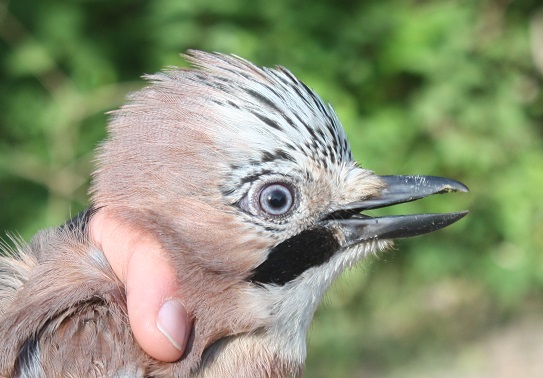
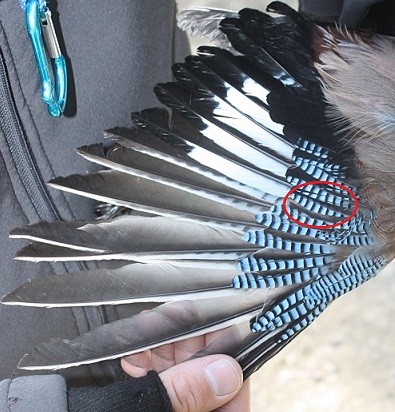

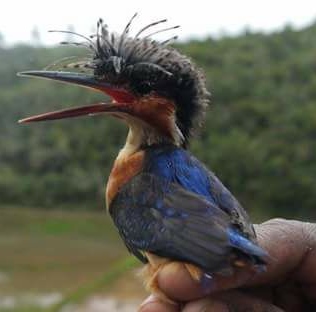
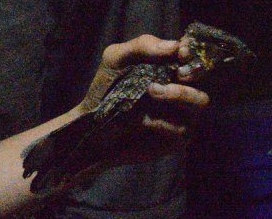 JC
JC